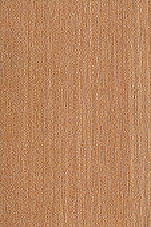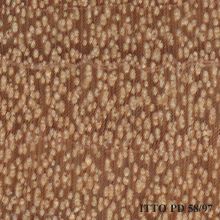
NEW GUINEA BEECH (Nothofagus spp)
Trade Name
New Guinea beech
Scientific Name
Nothofagus spp.
Family
FAGACEAE
Common Names
New Guinea beech (United Kingdom); Southern beech (United States of America); Southern beech (United Kingdom); New Guinea beech (United States of America); Pemmem (Indonesia); Snokko (Indonesia); Diri (Indonesia); Antartic beech (United Kingdom); Antartic beech (United States of America)
Description Of The Tree
Botanical Description
It is a medium-sized to large, evergreen tree up to 50 m tall. The bole is straight, cylindrical and up to 150 cm in diameter, sometimes with short buttresses or spurred.
Natural Habitat
Nothofagus species are dominant or co-dominant in the canopy of primary or old secondary montane forests in a range between 1,000 to 3,100 m of altitude.
Natural Distribution
It is distributed in Southernmost part of Victoria and reaching over to Tasmania (Australia) and extending to New Zealand with principal production resources in the west Coast and Southland regions of South Island.
Wood Identification
Anatomic Description Of Wood
Wood diffuse porous. Tyloses common. Vessels per mm2 5 to 20. Vessel-ray pits reticulate and/or foraminate. Simple perforation plates. Intervessel pits medium, 7 to 10 micras. Apotracheal axial parenchyma diffuse and/or diffuse in aggregates. Prismatic crystals in non-chambered axial parenchyma cells. 5 to 8 cells per parenchyma strand. Axial parenchyma bands more than 3 cells wide. Rays more than 10 per mm (abundant). Body ray cells procumbent with over 4 rows of upright and/or square marginal cells (Kribs-I). Fibers with simple to minutely bordered pits.
-
 Wood Macro Photo Tangential Plane
Wood Macro Photo Tangential Plane
-
 Wood Micro Photo Of Transversal Section
Wood Micro Photo Of Transversal Section
Availability
Cites Status
Unrestricted
General Wood Description
Odor
It has no taste or odor.
Color
The sapwood is creamy-yellow, clearly demarcated. The heartwood is brown to pinkish-brown.
COLOR INDEX (1=Black, 7=Light yellow,white)
6
Grain
The grain is mainly straight, rarely slightly wavy.
Texture
Fine texture is reported in this species.
Luster
The wood surface is lustrous.
Natural Durability
This species is considered as durable to moderately durable.
Natural durability index (1= Very high durability, 7=Vey low durability)
4
Silica Content
Silica Content: It is non-siliceous. Silica Value: 0
Resistance To Impregnation
The sapwood is permeable, the heartwood is moderately resistant to preservative treatment.
Wood Physical Properties
Basic Density or Specific Gravity (O.D. weight/vol. green) (g/cm³)
0.60
Air-dry Density (Weight and volume at 12%MC) (g/cm³)
0.66
Total shrinkage Tangential (Saturated to 0%MC) (%)
5.7
Total shrinkage Radial (Saturated to 0%MC) (%)
3.1
Drying Defects
Ease of Drying: Drying is reported to be rapid. It takes 2.5 months to dry 15 mm thick boards to air-dry condition. Drying Defects: This species is prone to warp and end checking. Kiln Schedules: The stock should be properly weighted down to reduce warping, and end-coating should be applied before kilning to reduce end splits.
Recommended Dry Kiln Schedule
UK-C; US-T3-C2; JP-38
Dimensional stability ratio (Total Tangential Shrinkage %/Total Radial Shrinkage %)
1.8
Wood Chemical Properties
Wood Mechanical Properties
Bending Strength (MOR),12%MC (kgf/cm²)
1074
Stiffness (MOE) 12%MC (kgf/cm²)
144840
Compression parallel to fiber 12%MC (kgf/cm²)
552
Shear strength radial 12%MC (kgf/cm²)
189
Janka hardness (side) 12%MC (kgf)
610
Workability
Sawing
Cutting resistance is generally low.
Rotary Veneer Cutting
Lamination of this species is possible.
Sliced Veneer
Lamination of this species is possible.
Machining
Machining operations are rather easy.
Moulding
It is easy to mold.
Turning
30
Nailing
Pre-boring is required.
Gluing
It is reported to be easy to glue.
Polishing
Polishing of this species is reportedly easy.
Response To Hand Tools
This species is reported to be easy to work with hand tools.
REFERENCED USES
End Uses Summary
EXTERIOR GENERAL, bridges, crossties, HOUSING GENERAL, flooring, frames, panelling, FURNITURE AND CABINETS, PLYWOOD AND VENEER, TURNING, TOOLS, tool handles, CONTAINERS, truck bodies, truck flooring, NAVAL CONSTRUCTION, OTHER AND MUSICAL INSTRUMENTS, handicrafts
Exterior General
- 1 - Tabela de resultados de ensaios fisicos e mecanicos
Bridges
- 2 - 25 madeiras da amazonia de valor comercial, caracterizacao, macroscopica, usos comuns e indices qualificativos
Crossties
- 8 - Maderas latinoamericas. III, Podocarpus standleyi ,Podocarpus oleifolius, Drims granadensis, Magnolia poasana y Didymopanax pittieri
General Housing
- 10 - Silica in Timbers
Flooring
- 14 - Handbook of Hardwoods
Frames
- 16 - Woods of the World
Paneling
- 18 - W3TROPICOS Missouri Botanical Garden
Furniture Cabinets
- 21 - Tropical timbers of the world. Part III-Southeast Asian and Oceanian Species.
Panels, Veneers
- 25 - Directory of Timber Trade Malaysia
Turning
- 30 - Embassy of Honduras in Japan
Tools
- 42 - Utilización Industrial de Nuevas Especies Forestales en el Perú.
Tool Handles
- 43 - Maderas de Bolivia (Características y Usos de 55 Maderas Tropicales)
Truck Body
- 53 - Timbers of the New World
Truck Flooring
- 54 - Bulletin of the Government Forest Experiment Station N.157: Identification of Tropical Woods
Shipbuilding
- 55 - Tropical Timber Atlas of Latin America
Other & Musical Instruments
- 63 - Madeiras do Brazil II
Handcraft
- 66 - Maderas latinoamericanas. VII. Caracteristicas anatomicas. propiedades fisicomecanicas, de secado, y tratabilidad de la madera juvenil de Cordia alliodora (Ruiz & Pav. Oken.)
Please Provide Information To View Producer Information